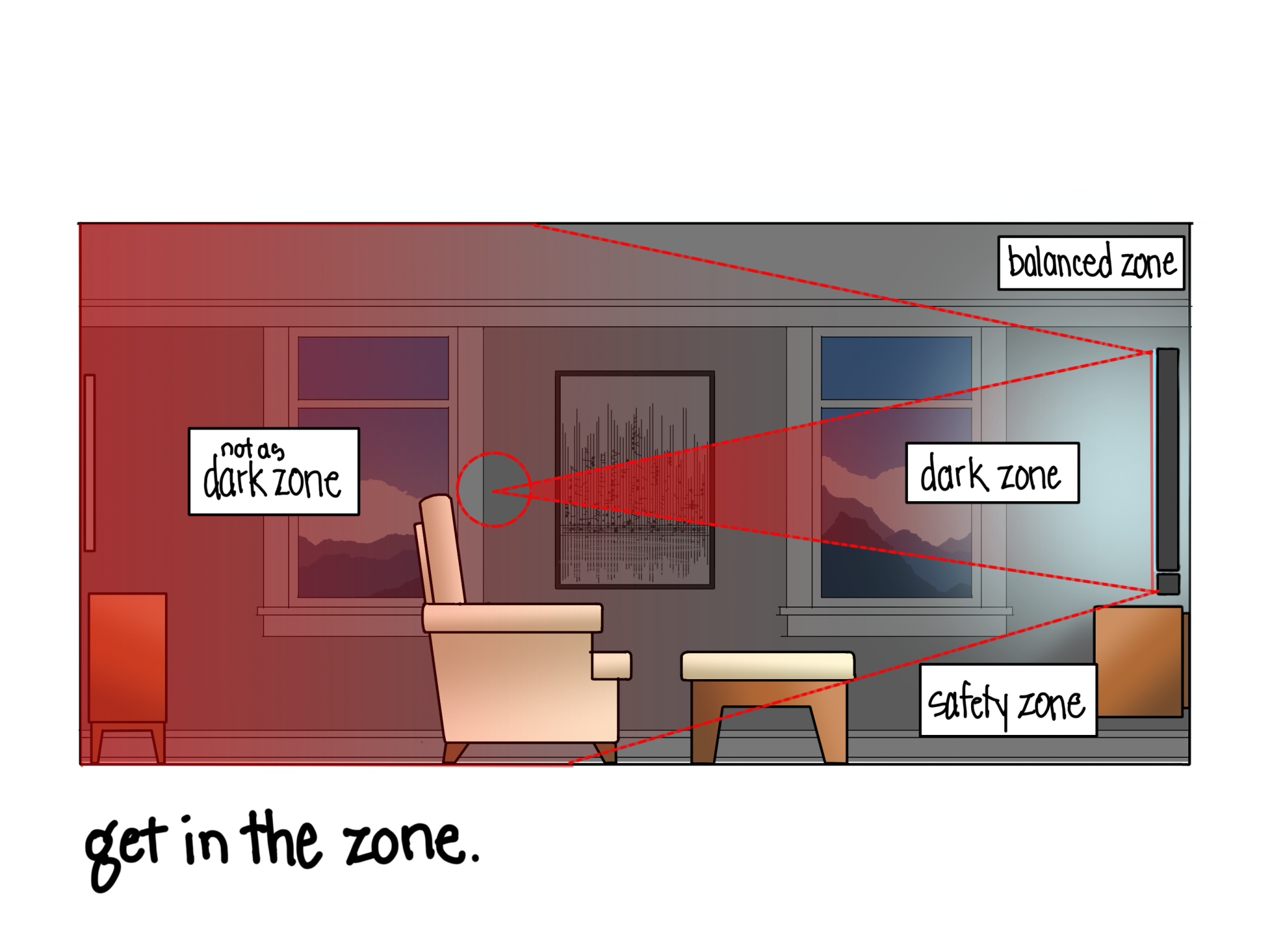With just two months left in my 2022 blogging plan, I’m already growing nostalgic about my 1THING posts. The artificial constraints of narrowing all lighting down to just a single solution for new builds or plug-in retrofits for a handful of common spaces gave me focus and structure for the year, and the sketching exercises used to discover the solutions have been just plain fun. And, as intended, I’ve learned something from dedicating the time and energy to each successive challenge. My lighting designs get better when I blog. And perhaps you’ve found something useful, too.
This week’s 1THING: New Build post tackles media rooms, which I categorize any room used primarily for watching television, movies, or other digital content. Media rooms are not dedicated home theaters- those are an entirely different space. Media rooms, unlike theaters, can also be used like living rooms for reading, playing games, conversation, and more. That makes them multi-functional spaces that could benefit from previous posts on living rooms, but what changes when the tv is turned on?
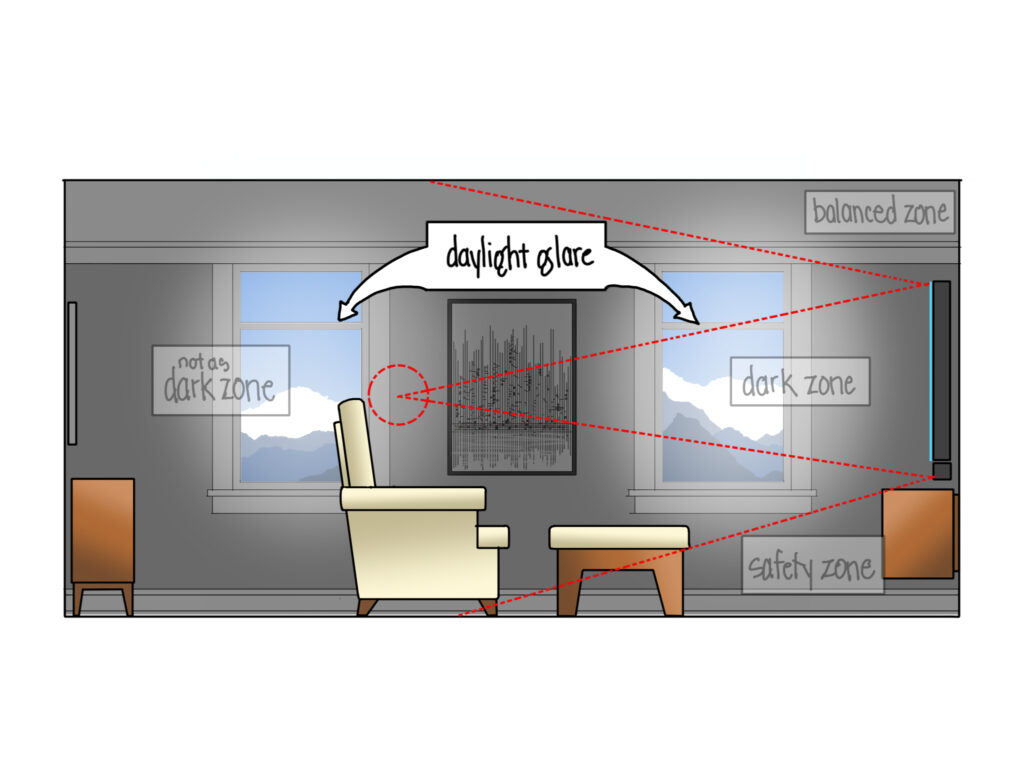
What is the first thing we do when watching a dark movie on a bright day? We pull the blinds or curtains in the room so we can see better. This is a great first step if you are getting serious about watching and there is too much natural lighting coming in the windows. Some light-filtering blinds might be even better, so you get a little sense of the outdoors, but that can be personal preference. That isn’t really a lighting solution – cutting out light – but it’s probably the first step.
Most of today’s big-screen televisions have a glossy reflective coating that helps the television achieve crisp, deep blacks for nighttime scenes and overall detail. This means we spend the entire movie (or Downton Abbey binge session) staring at a black mirror. Perhaps the best way to evaluate your media room lighting is to sit down and look at the screen while it is turned off. What do you see?
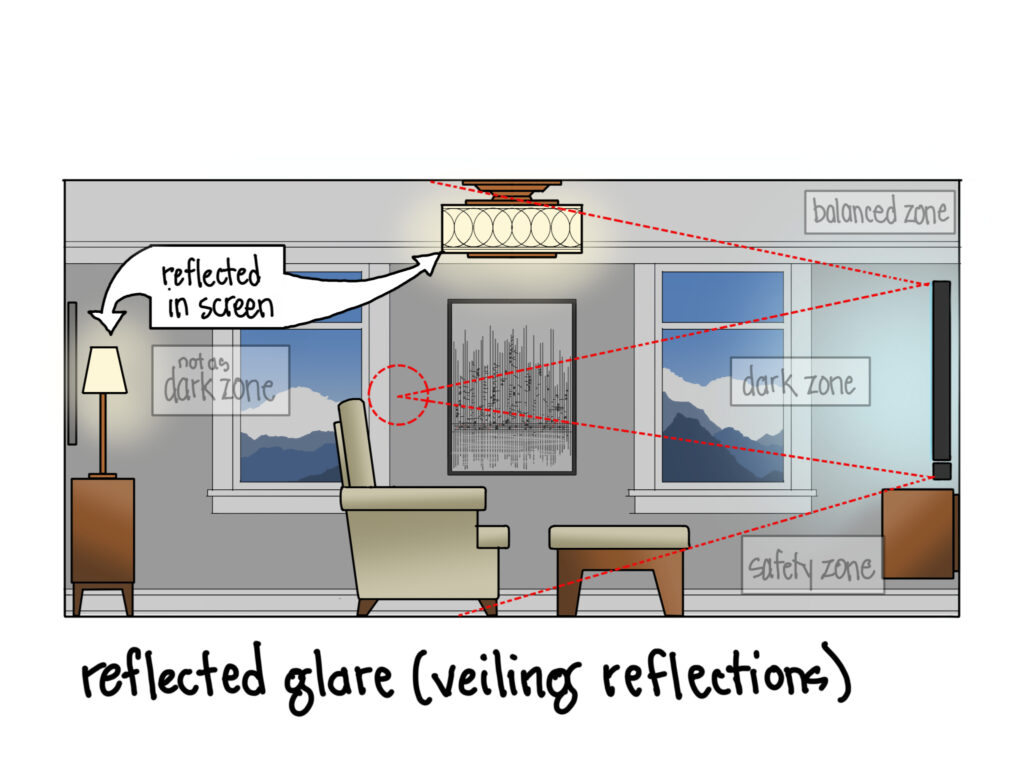
Most of us will see a reflection of the room around us, especially in the “not as dark zones” outlined above. Lamps, chandeliers, and art lighting in these zones will likely be much brighter than their surroundings, leading to something we call veiling reflections or reflected glare. Those are fancy terms for the “when-you-are-watching-The Batman-and-you-can-see-a-clear-reflection-of-your-floor-lamp-in-Batman’s-cape” effect. Hmm, I suppose we could use the WYAWTBAYCSACROYFLIBC acronym for the above effect, or stick with the somewhat vague but significantly shorter “reflected glare” term. Your choice.
Okay, let’s say you’ve lowered the blinds and turned off the decorative chandelier and lamps. That can make the room feel like a theater- dark and moody- and that isn’t always the most comfortable.
Here’s where it gets tricky – choosing just one source of light to add to a new build room.
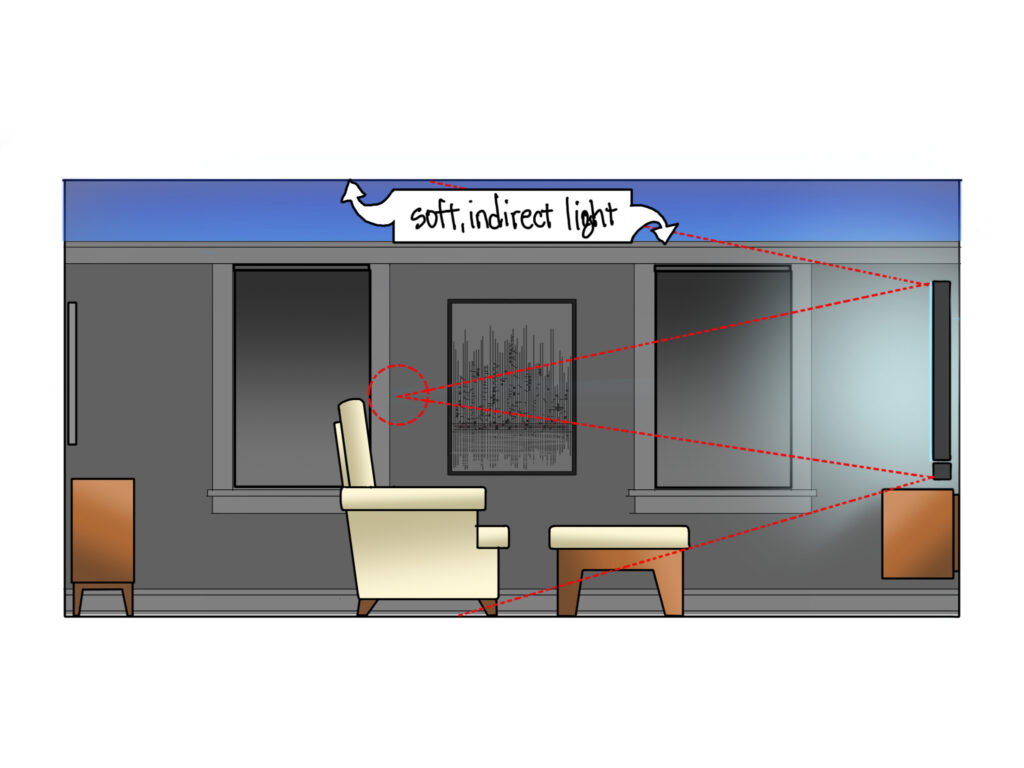
After some debate, I’ve settled on soft, indirect color-changing light as my recommendation.
I do not use a lot of saturated color, but there is something relaxing about a deep blue sky above us. Indirect lighting, usually achieved with a cove or linear LED trim, can be soft and even on the ceiling, reducing glare. The light then bounced down into the room, making it easy to safely navigate on your way back to the kitchen for a snack at halftime.
A cove is not the only way to get indirect color-changing light into your media room. I have seen others add strips of light to the tops of their window trim, over doorways, and on top of bookshelves to achieve similar effects. Just keep in mind that the more evenly distributed, the lower the potential for veiling reflections.
And one more thing…
I discovered a zone in my diagram that needed a little bit of light to navigate safely, which I aptly named the safety zone. This is low down to keep light out of your eyes and off the screen and could be serviced by nightlights, step lights, or other downward-facing source. In the sketch below I illustrate linear LED “tape” light underneath a floating media cabinet that puts a soft glow on the floor. Sure, you’ll get enough light from the ceiling…but this added approach will allow you to dim the ceiling a bit more and still feel comfortable.
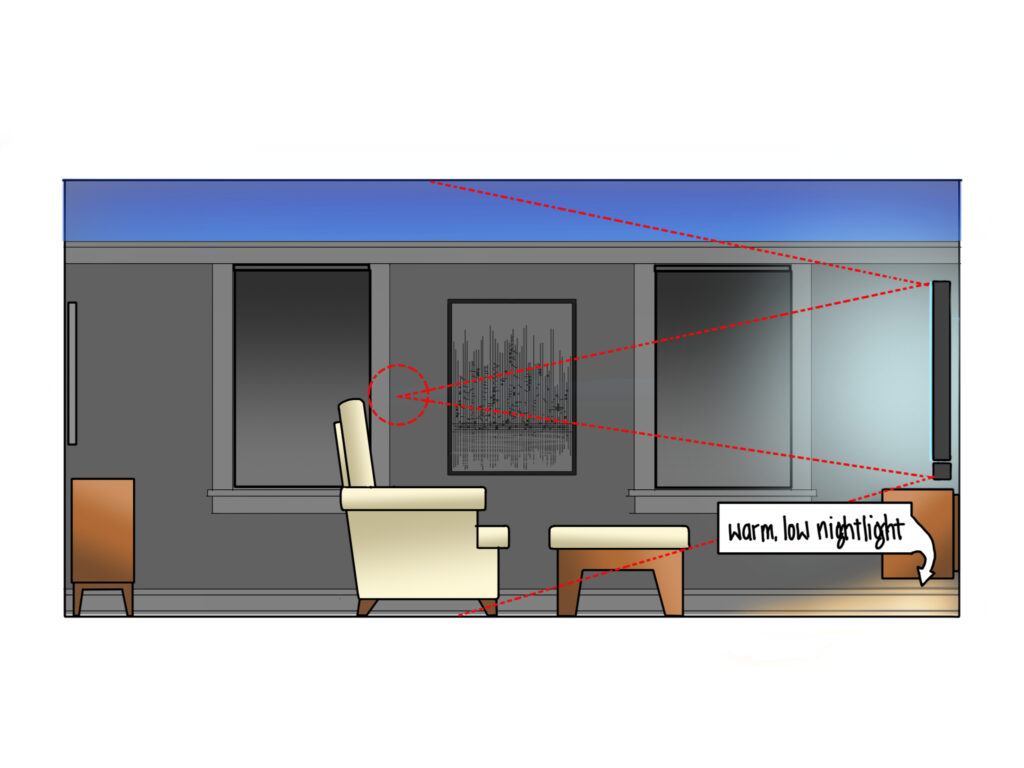
If you have a space you’d like to see me tackle, let me know!
